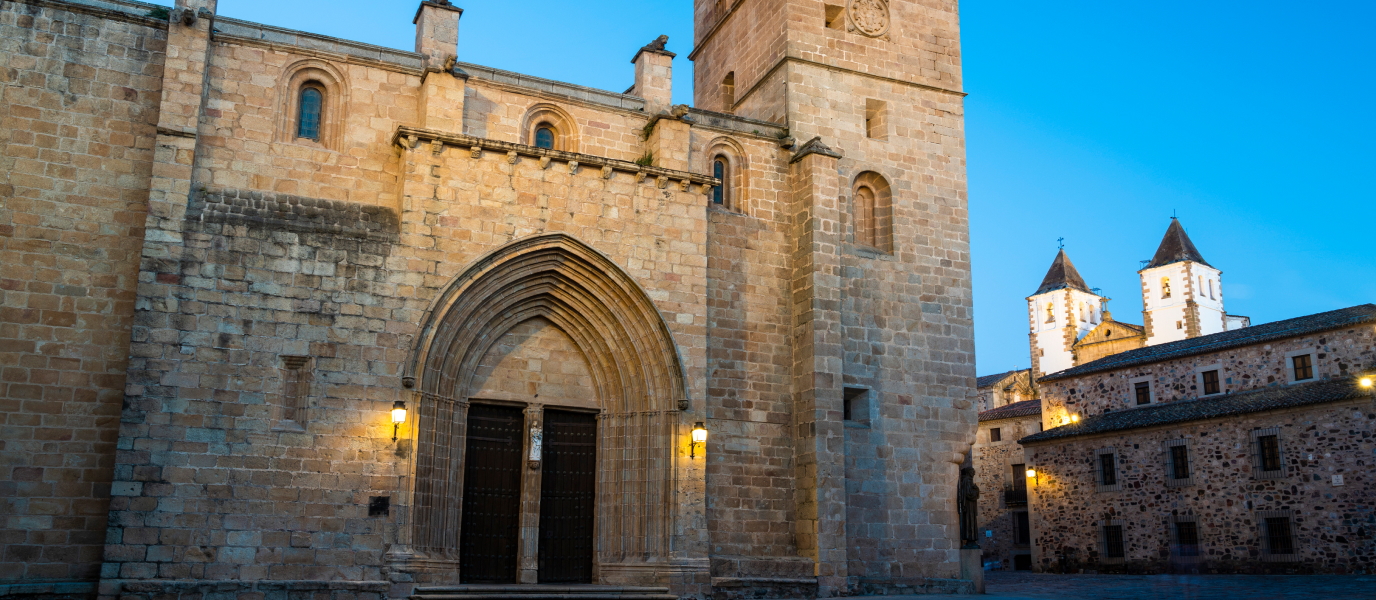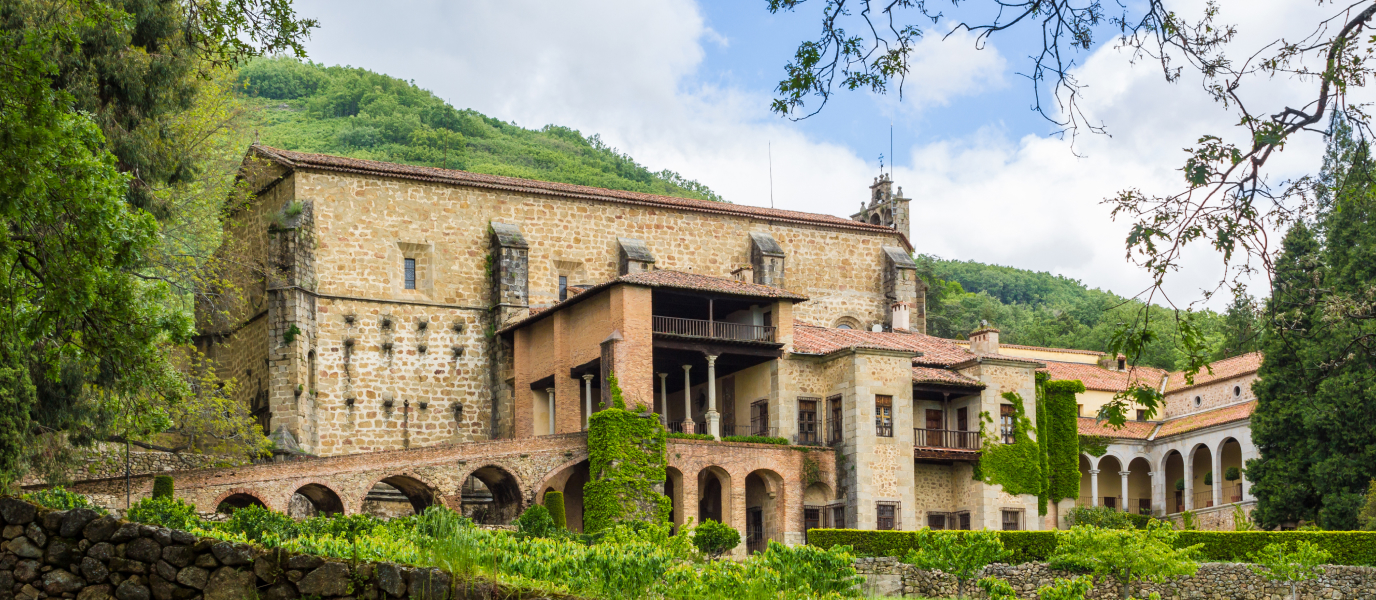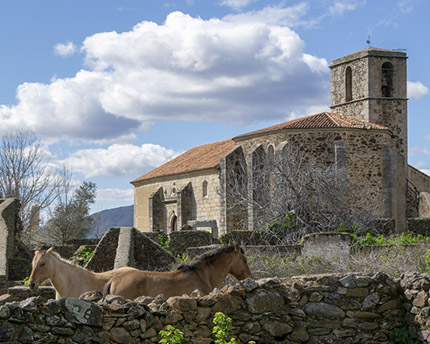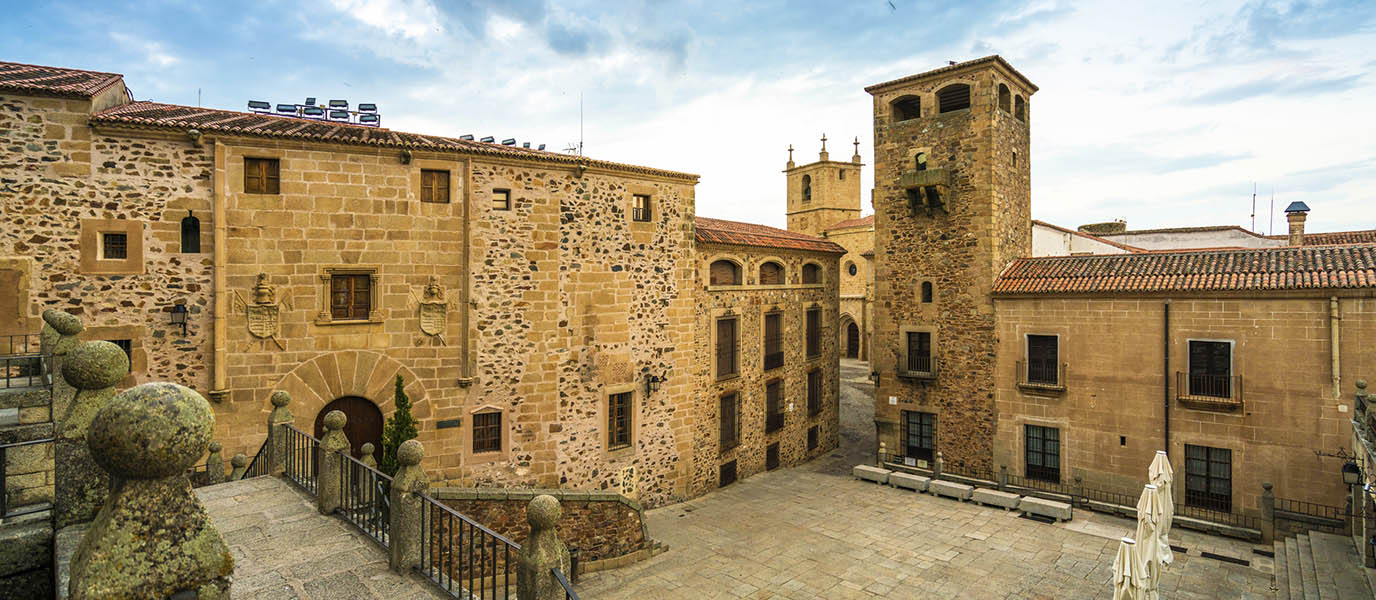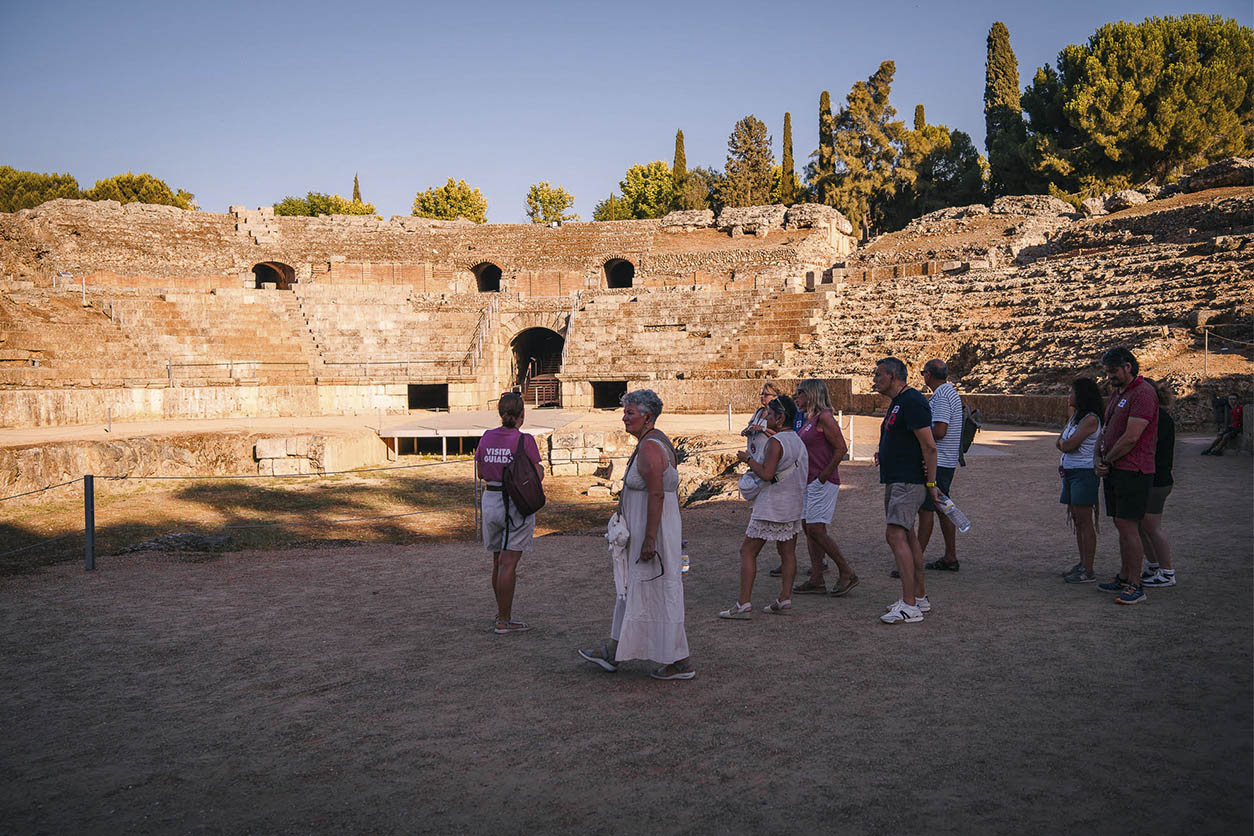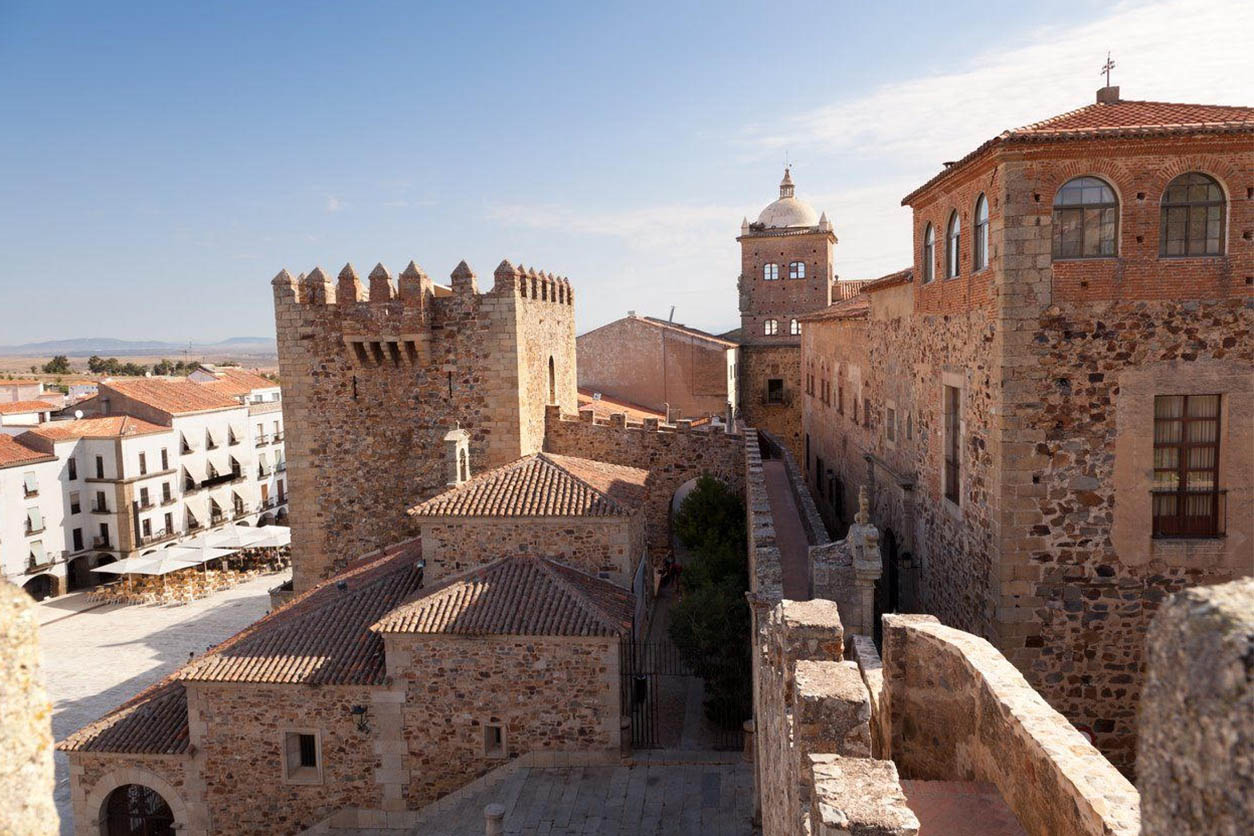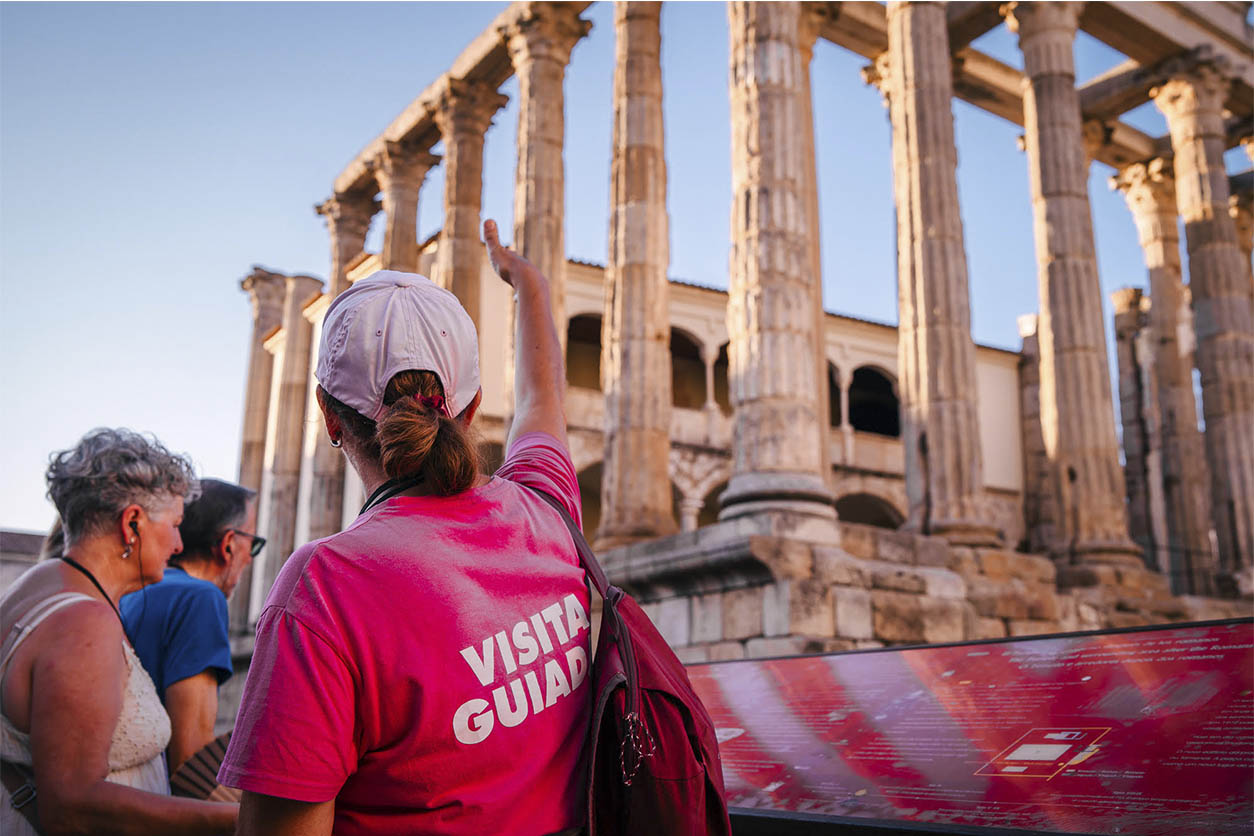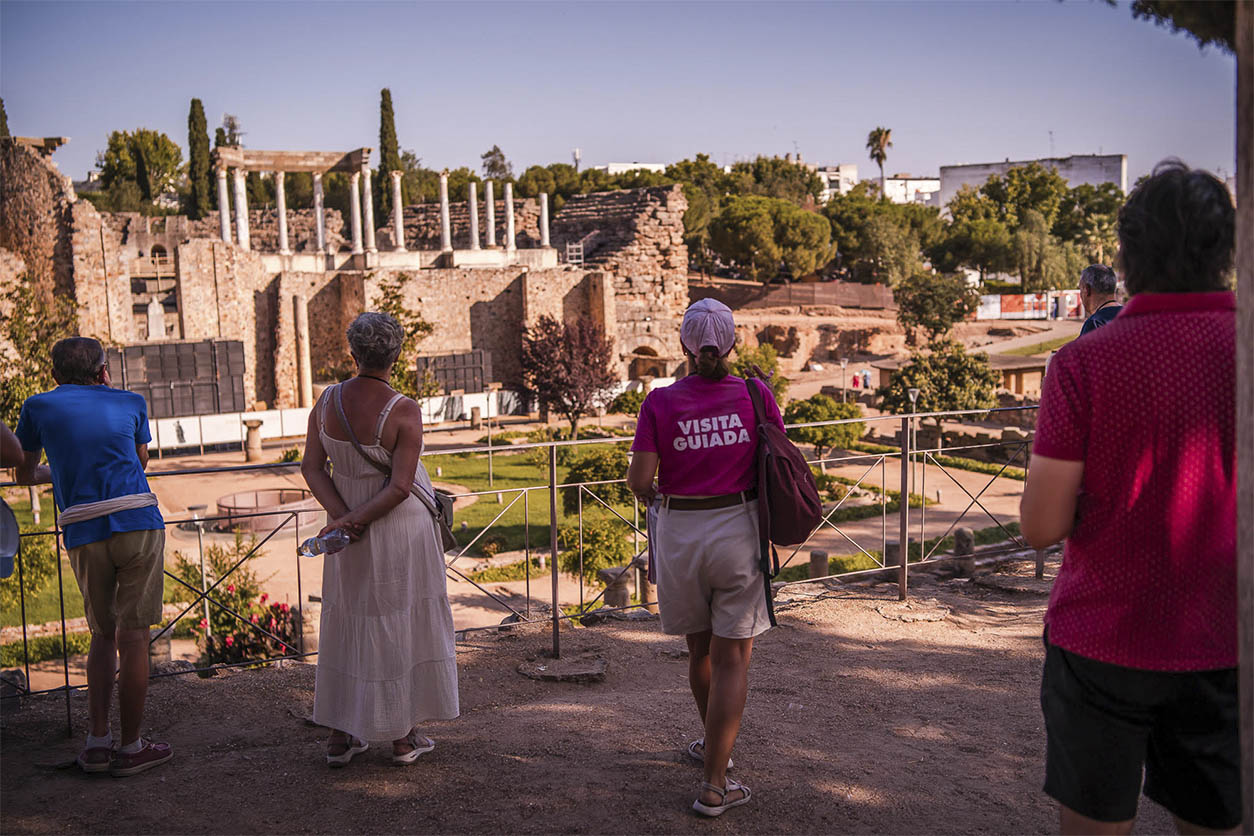Standing majestically in the heart of the city, Cáceres Cathedral is a feast for the eyes. Since 1957 it has held the honour of being a co-cathedral (meaning it shares the function of being a bishop’s seat with another cathedral). As you wander through the streets of Cáceres, sooner or later you’ll end up in Plaza de Santa María at the foot of this impressive religious building.
Concatedral de Santa María, the crowning glory of Cáceres
The Concatedral de Santa María de Cáceres, or Cáceres Cathedral, is not only the most important church in the city but also the oldest. It dates back to the 13th century, and in 1931 was declared an Artistic Heritage Monument. It’s famous for its image of the Black Christ, which holds a special place in the hearts of local worshippers.
Like all great religious buildings, Cáceres Cathedral is a fusion of successive artistic styles. The original Romanesque cathedral with wooden roof was almost completely destroyed before being rebuilt in Late Gothic style during the 15th and 16th centuries. It later acquired Renaissance features, particularly in the three-section tower designed by Pedro de Ybarra and in the choir, which has a gallery created by Pedro de Marquina in the mid-16th century. The 20th century has influenced the building too – at one corner of the tower, almost at floor level, is a sculpture of San Pedro de Alcántara by the Extremaduran artist Enrique Pérez Comendador in 1954.
Gothic doors
Cáceres Cathedral is a granite building with two Gothic doorways: the Portada del Evangelio, which looks onto the Palacio Episcopal, and the main doorway onto the Plaza Mayor, bearing the Orellana coat of arms and a striking pointed Gothic arch.
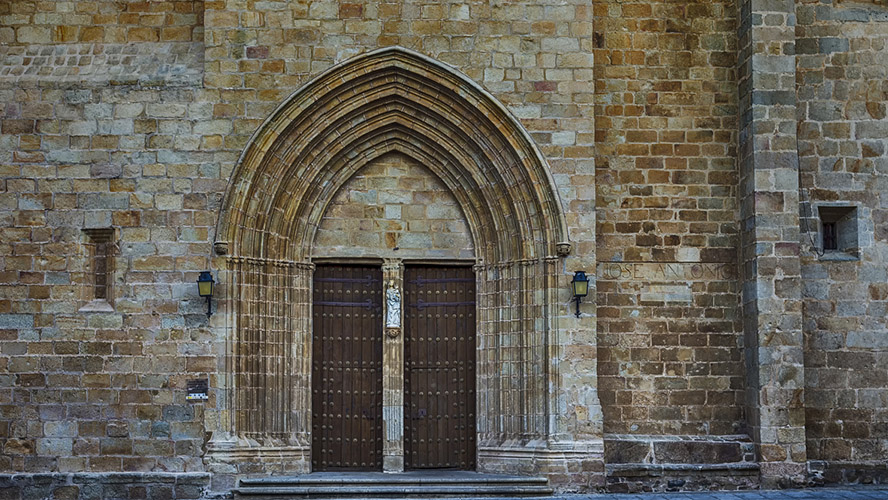
Inside, the rectangular cathedral is split into three naves: the nave del Evangelio, the nave Central and the nave de la Epístola. The bell tower is open to the public, and if you don’t mind climbing its spiral staircase you’ll be rewarded with one of the best views over Cáceres and its old town (link: old town of Cáceres), which is in fact a UNESCO World Heritage Site. It has Gothic rib vaults bearing the coats of arms and heraldry of the most important families in the city.
Renaissance main altarpiece
The most impressive feature inside Cáceres Cathedral it undoubtedly its plateresque main altarpiece from the Renaissance. It was made in cedar and oak by Guillén Ferrant and Roque Balduque, and it’s unique in that it has no colouring. The three distinct sections have sculptures of the apostles and other biblical figures. The central section is dedicated to the Passion of Christ and the life of the Virgin Mary, including the Assumption of Mary. Above the altarpiece is a painting representing a confrontation between the Archangel Saint Michael and the demons – a symbol of the battle between Good and Evil.
As you walk through the cathedral, look down to see the coats of arms of Cáceres’ most noble and illustrious families, and don’t leave without admiring the spectacular Baroque altarpiece in the Capilla de San Miguel. This chapel houses a representation of the Prince of the Celestial Army of God (Saint Michael) and has an artistic grille from 1551 bearing noble coats of arms.
And of course, stop at the Capilla de los Blázquez to see the much-venerated Black Christ. The figure was originally housed in a now-disappeared convent.
There’s also a statue of Cristo de las Batallas (Christ of Battles) beside the choir, and a representation of Cristo del Refugio (Christ of Refuge) which came here from the Convento de San Francisco.
If time allows you can also visit the Capilla de Santa Ana, dating to 1446, and the Capilla de la Milagrosa.
For music enthusiasts, the organ was built by Manuel de la Viña in 1703 and in 1973 was refurbished by the company Orgamusik.
Cathedral Museum
The sacristy and chapter house have a museum about the history of the cathedral. It houses an important collection of religious objects and vessels as well as sculptures, religious paintings, choir books and hand-made sacred clothing.
In addition, the sacristy contains the tomb of Francisco de Godoy, a conquistador who served Francisco Pizarro. The entrance to this space is a pretty plateresque doorway created in 1527 by Alonso de Torralba.
Cáceres’ history is written into the walls of its cathedral – make sure it’s part of your trip to this historical city.




































































